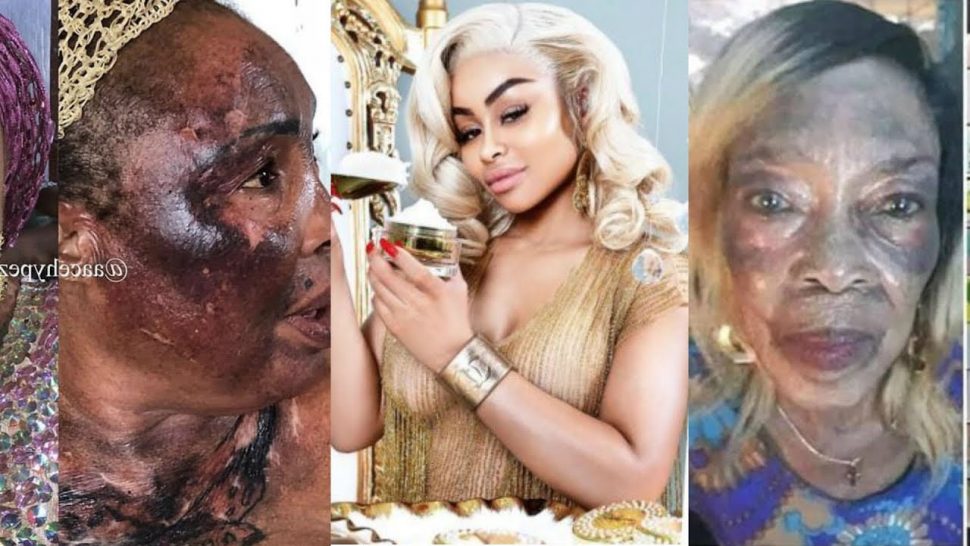“Hundred percent cashback guarantee. Looks like a South African yellow-bone with no injections at a price close to free. Our creme mixtures vary. We give you different kits, depending on the shade-tone you want to achieve. All our creames give you a natural-looking healthy brightened or whitened tone, depending on your choice…”
Thus screams an advertisement posted in January in a local popular online classifieds platform.
One thing the entire human race can agree on is that it has a problem with dark skins. Granted, white people also have a problem with it, but let’s forget them and their issues for a minute. It’s too easy and lazy to blame white people for all the problems the black race has ever encountered, but we do not want to do that here. We have the ace in our bag and can always resort to screaming ‘racism!’ whenever we need to keep them in check and on their best behaviour.

Today, however, we are letting them off the hook. The attitudes and actions of some of us appear to agree with them that many of us continually try to ‘improve’ our skin by lightening it. Notably, it is not just black people who hate their own skin because darker-skinned races of the world in general like East Indians, Filipinos, Latinos, Arabs, among others, seem to also all have complicated relationships with their skin shades. All races that are not purely white seem to have some skin complexes.
The global skin lightening industry is worth billions of dollars and quite evidently, it is not fuelled by black Africans only. Different non-white races aspire to get a little lighter, even if it is only by a slight shade. However, some covet the full white-skin deal and so go heavy on the bleach or they die trying.
There are arguments that white people also envy dark skin and hence the reason they are so big on tanning, but it is a weak argument because white people certainly do not want to turn black…and the blackface certainly doesn’t count. (Blackface is a controversial theatrical pitch-black paint mask used to mock black people)
Anyway, we said we would leave white people alone and out of this one.
There is white on black racism over which wars have been fought and lives lost, and myriad laws instituted to prevent it and punish racists and protect black people. However, the world is silent on colourism or shadeism.
Black on black discrimination is real and is based on the notion that lighter shades of black are superior.
It is practiced among black people themselves. It may now be time to institute laws against it because the problems it causes are real. Colourism oppresses darker shaded black people and takes away meaningful social and economic opportunities from them.
Jobs, marriage and dating opportunities are fewer and less attractive. Darker blacks are deemed uglier and generally less deserving of good opportunities in everything.
The shadeism code is unwritten, but is well known and practiced in black communities worldwide, including Africa. Despite popular belief, shadeism predates colonialism and slavery. This is evidenced by living African idioms and expressions that extol the virtues of light skin. Lighter women in particular are perceived as being more attractive, even though taken as somewhat dangerous.
Shona men are warned to tread cautiously when dealing with them to avoid being ensnared in their enticing, but toxic webs. Beneath the deceptive and captivating beauty of every light-skinned woman, it is believed that underneath lies either a witch, a prostitute or thief. So caveat emptor – buyer beware.
However, this is the least of their problems as despite the dire warnings, lighter-skinned black women still get snapped up more quickly off the shelves than the darker ones.
It appears men would rather risk living with a witch or a thief or even a prostitute than settle for a dark-skinned girl because that light skin is worth every whiff of danger. Darker girls always finish last and linger longer on the shelf as they have fewer marriage and dating prospects.
This is according to an American research. There are no local statistics, but the same may probably hold true to scale if the studies were replicated here. Different American sociological studies show that darker black people have it rougher in just about everything.
Marriage and dating prospects are fewer, jail times are lengthier, incomes are lower and life is generally sadder than it is for their lighter-shaded cousins. Generally in America, it is common cause that black women of whatever shade have fewer opportunities of marriage than women of other races. However, within their own communities, darker-skinned women have a much harder time attracting husbands.
There are just not enough eligible black men to go around all the women due to a number of challenges and factors within the American society. The struggle for the ever elusive eligible black man is intense and fierce and black women often have to take desperate measures to pin-down a husband, including dropping their standards completely to rock-bottom.
There gets a point in many a black spinster’s life when things get really desperate that she reckons any member of the male species will do as long as he can still be dragged home and cleaned up.
The struggle is real. More and more darker-shaded black women are increasingly failing to find husbands at all, never mind the eligibility.
Statistics quoted in a recent Guardian newspaper article entitled: “Why dark skinned black girls like me aren’t getting married,” quotes a study by Ohio University researchers which began in 2003. It shows that 55% of light-skinned black women are married compared to only 23% of the darker-skinned ones. These statistics are sobering.
Lighter shaded black women have more than double the chances of their darker sisters to get hitched. It pays to have a lighter skin tone if walking down the aisle is your dream because you have twice as many chances of finding a man waiting for you down that aisle than a darker girl does. This is scientifically proven and the only way to argue with it is to conduct counter-research and come up with different results.
In Zimbabwean society, the problem of not getting married (for those to whom it is a problem) may not be expressible in such defined colourism terms because the contextual dynamics are different. Yet still, there might just be something to be said when the growing culture of skin bleaching is considered.
Incidentally, black African men are increasingly getting into the bleaching craze and at alarming rates. They are no longer content with remaining dark-black when they have options and can also get lighter and ‘better’.
Enter the age of the Zim metrosexual — always late to the party, but eventually gets there.
Rumour has it that even very powerful and unlikely men who stroll and shake the corridors of power carry small tubes of Movette and Carolight to dab a bit on now and then in the gents. The more enlightened and discerning guys go for the more expensive, but highly effective whitening injectibles which do not leave embarrassing tell-tale pitch black blotches on their knuckles and joints.
However, women remain the biggest customers of skin bleaching products and the tonnes of smuggled products continue to flood the insatiable and ever-growing market. Even the language on the street shows the extent and acceptance of the practice by the wider society.
Out on the streets in Harare, jovial young men call out to passing young women “Yauya yellow bone!’ or ‘Tatsikwa ne tsito bone!’ The end result is that for some, it is a tough choice to bleach or not to bleach.
Writer’s Warning: The use of skin-lightening products is harmful and their trade is prohibited under the Dangerous Drug and Substances Act of 1980. Their trade and dealing should be reported to the police or the Medicines Control Authority of Zimbabwe.
Newsday – April 13, 2019






